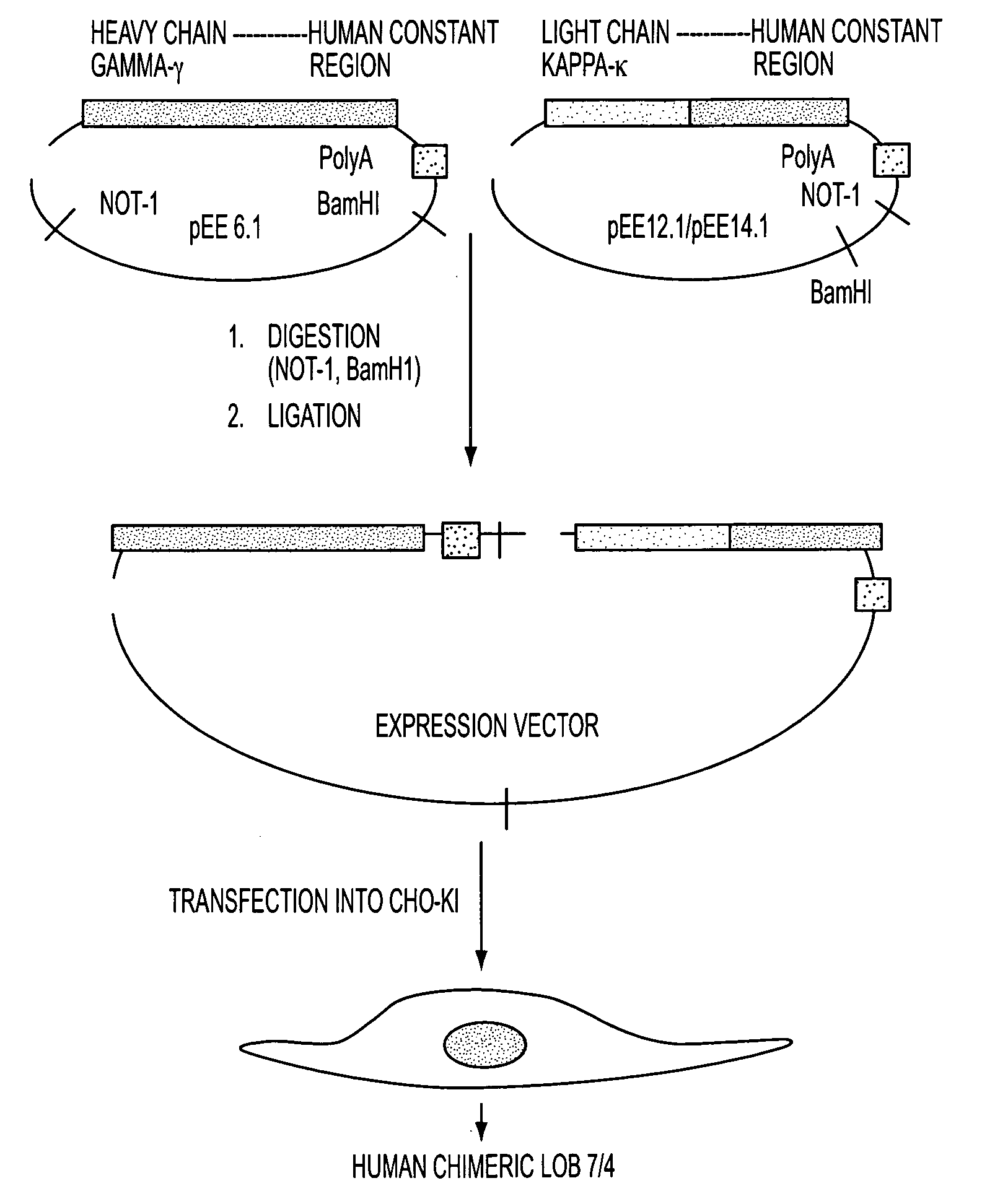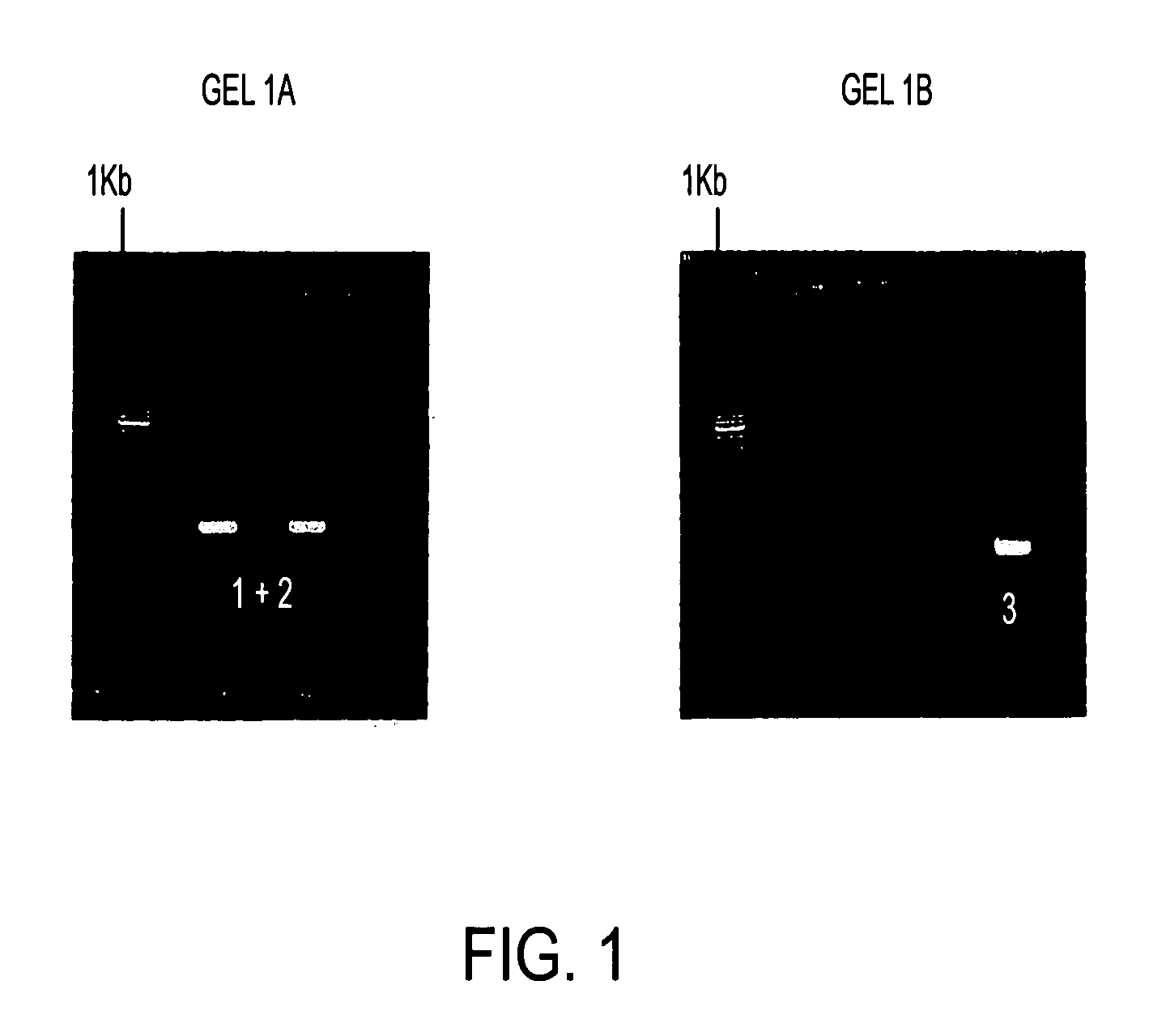Human therapies using chimeric agonistic Anti-human cd40 antibody
a technology of cd40 antibody and human therapy, which is applied in the field of human therapies, can solve the problems of human clinical trials, adverse stroke incidence, and unpredictability of adverse side effects of such antibodies, and achieve the effects of improving clinical efficacy, reducing the risk of stroke, and improving the safety of patients
- Summary
- Abstract
- Description
- Claims
- Application Information
AI Technical Summary
Benefits of technology
Problems solved by technology
Method used
Image
Examples
example 1
Production of a Chimeric Human Monoclonal Antibody 7 / 4 According to the Invention
[0057]Initially a chimeric anti-human antibody was derived from a murine anti-human CD40 antibody referred to as LOB 7 / 6. After the synthesis thereof, subsequent growth inhibition work using the high grade human B cell line (RL) indicated that another murine anti-human CD40 antibody referred to as LOB 7 / 4 might be might be more potent in terms of signaling via CD40 than LOB 7 / 6. The selection and synthesis of this chimeric antibody and some of its in vitro properties is described in detail below.
[0058]Antibody Selection
[0059]A panel of LOB anti-CD40 antibodies were tested in a system using elutriated monocytes obtained from a normal donor and cultured at a density of 1.5×106 / ml in T-165 flasks containing serum free defined media. GMCSF 10 ng / ml and IL4 20 ng / ml were both added to the flasks. Fresh cytokine was subsequently added on days 3 and 6. On day 6 TNFα 50 ng / ml was added to all but one flask (GMC...
example 2
Costimulatory Assays
[0093]LOB 7 / 4 the parent antibody of chimeric LOB 7 / 4 was assessed against a known agonistic anti-CD40 antibody mAb s2c6 for its ability to upregulate the key costimulatory molecules B7.1 and B7.2 in a dendritic cell culture system developed by Jan Fisher and Chris Treter of Dartmouth Medical Center. LoB 7 / 4 was found to upregulate B7.1 and B7.2 in greater than 90% of cultured dendritic cells, similar to the s2c6 antibody. [Harvey et al., “CD40 Antibodies for the treatment of human malignancy” 2002]
example 3
Growth Inhibitory Assays
[0094]Light microscopy of beads linked to LOB 7 / 4 or chimeric LOB 7 / 4 and incubated with CD40 expressing cells (Daufdi) showed obvious antibody mediated bead-cell binding. Beads linked to negative control mAbs (DB7-18 or Irr Hu IgG did not bind to CD40 expressing cells.
[0095]Growth inhibition of human non-Hodgkin's lymphoma cell lines was assessed using [3H methyl} thymidine incorporation assays. Incubation of RL and Daudi cell lines for 5 days with LOB 7 / 4 and chimeric LOB 7 / 4 led to significant inhibition of cellular proliferation when compared to incubation with irrelevant, isotype matched murine (DB7-18) or human (Irr Hu IgG) mAb to cells incubated without antibody. All antibodies were presented linked to microbeads; (100 micrograms linked to 2×10 8 beads). Maximal growth inhibition occurred at a bead concentration of 50,00 beads per well.
[0096]Growth inhibition of human epithelial cancer cell lines was assessed using the tetrazolium bromide conversion as...
PUM
| Property | Measurement | Unit |
|---|---|---|
| concentrations | aaaaa | aaaaa |
| concentrations | aaaaa | aaaaa |
| concentrations | aaaaa | aaaaa |
Abstract
Description
Claims
Application Information
 Login to View More
Login to View More - R&D
- Intellectual Property
- Life Sciences
- Materials
- Tech Scout
- Unparalleled Data Quality
- Higher Quality Content
- 60% Fewer Hallucinations
Browse by: Latest US Patents, China's latest patents, Technical Efficacy Thesaurus, Application Domain, Technology Topic, Popular Technical Reports.
© 2025 PatSnap. All rights reserved.Legal|Privacy policy|Modern Slavery Act Transparency Statement|Sitemap|About US| Contact US: help@patsnap.com



